Pricketts Fort State Park
Introduction
Text-to-speech Audio
Pricketts Fort is a state park and historic site that preserves and interprets the history of the western Virginia frontier during Dunmore’s War (1774) and the Revolutionary War (1775-1783). In 1772, Jacob and Dorothy Prickett and their 11 children established a subsistence farming homestead on the property. With the outbreak of Dunmore’s War in 1774, Pricketts Fort was constructed as a civilian fort to protect local settlers from potential attacks by Native Americans. The fort today was reconstructed in 1976 in preparation for the United States bicentennial. The historic site includes a Blacksmith shop, the 1859 Job Prickett House, a visitors center with a museum and gift shop, an amphitheater for events, a historic cemetery, and several miles of trails. It was added to the National Register of Historic Places in 1972 and is currently under the care of the Pricketts Fort Memorial Foundation and West Virginia State Parks. Guided tours are offered from mid-April through the end of October.
Images
The reconstructed Pricketts Fort is a "memorial fort" in remembrance of those who endured hardship in the western Virginia frontier.
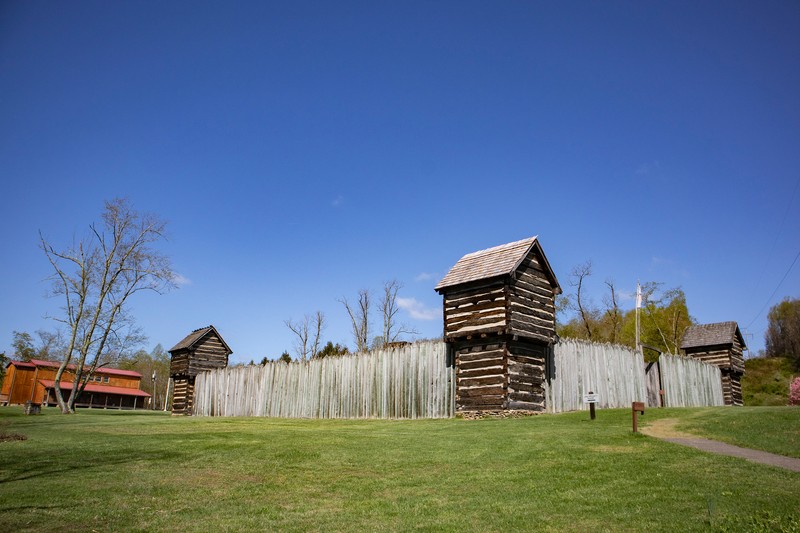
Two large buildings inside the fort represent a trading post and meeting house, respectively.
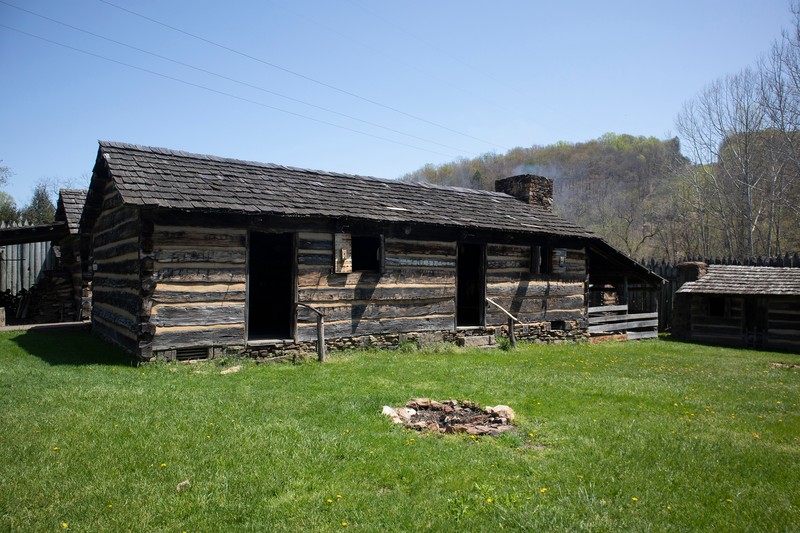
Inside the fort there are 16 small cabins that provided civilians and the militia with shelter.
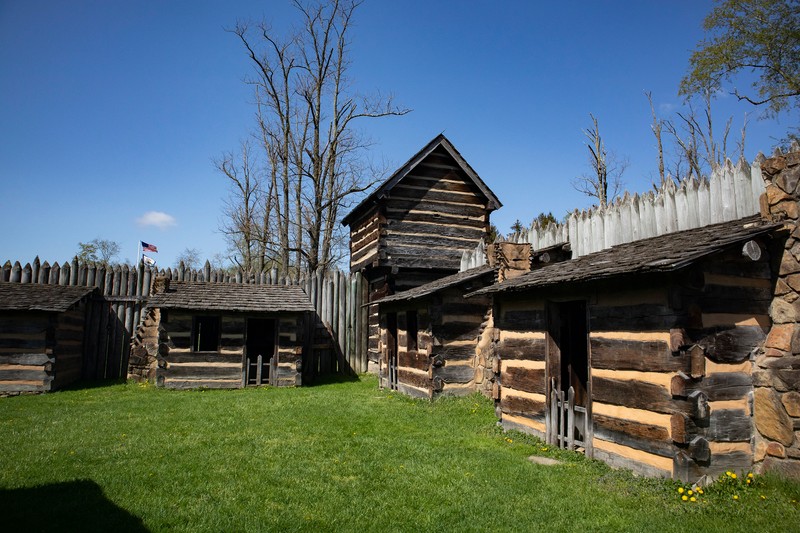
Reconstruction of Pricketts Fort lasted from 1974-1976 and was completed for the United States bicentennial. This image nicely shows the layout of the fort interior, including the Trading Post, Meeting House, cabins, and blockhouses.
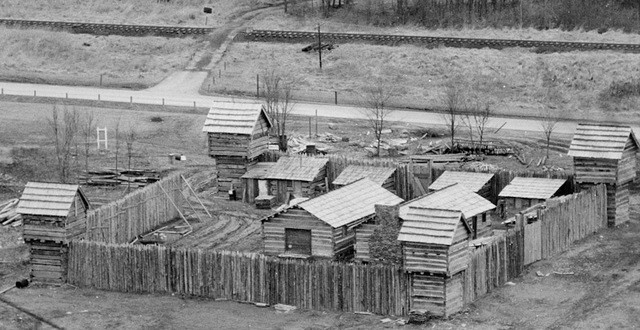
The Bray Blacksmith Shop allows Pricketts Fort to interpret an essential trade of the late 18th century. It was built using historic logs.
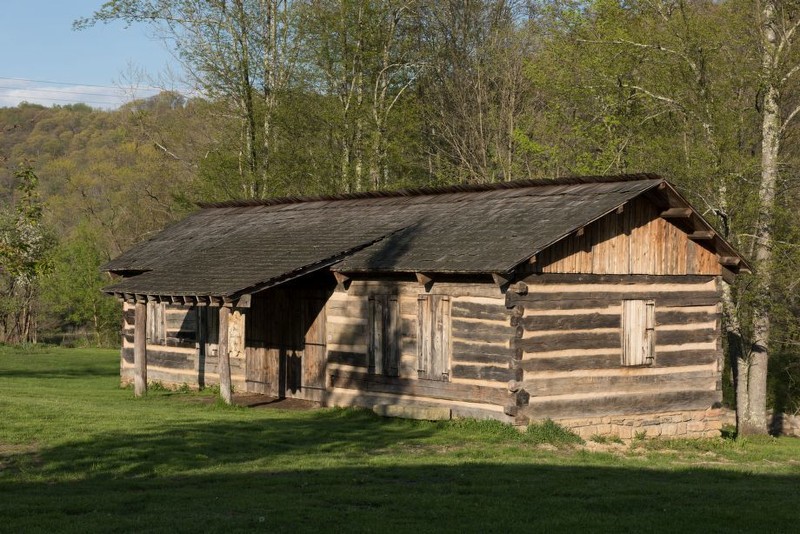
Members of the Prickett family, as well as other notable figures like Zackquill Morgan, the founder of Morgantown, are buried in this cemetery.
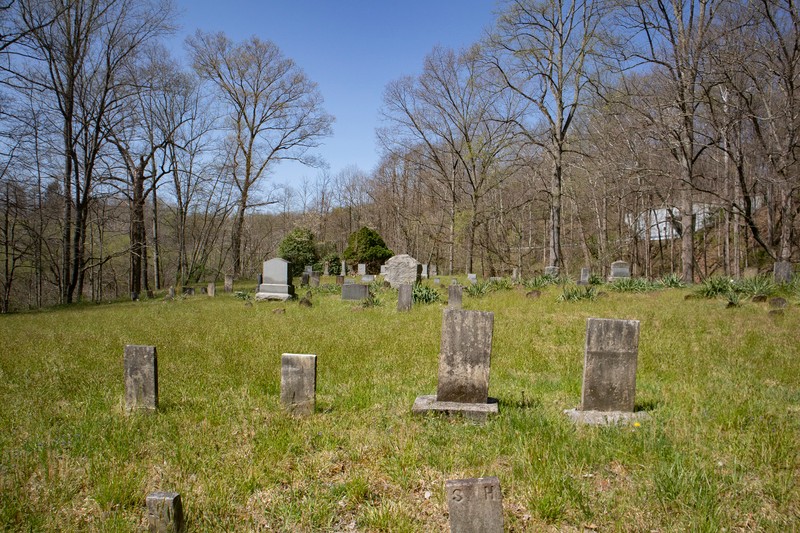
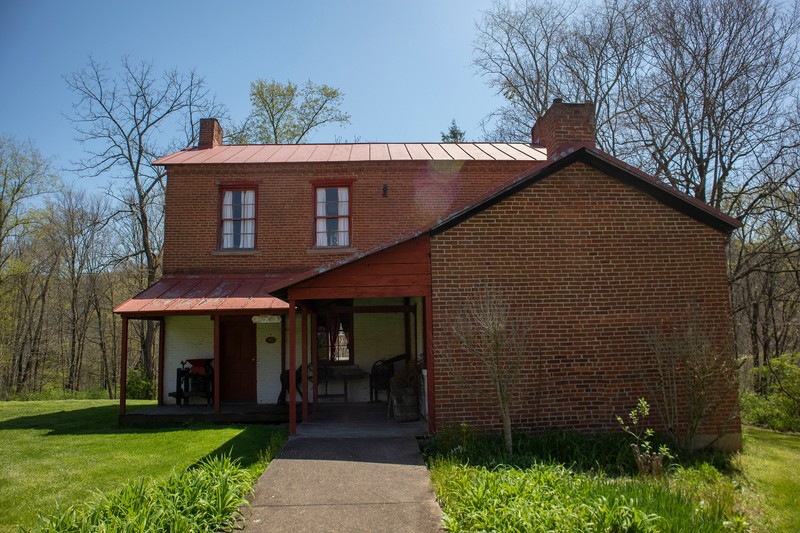
Backstory and Context
Text-to-speech Audio
In the 18th century, modern-day West Virginia was considered the Virginia frontier, a heavily forested, mountainous region that became a battleground between white European settlers seeking control of land and Indigenous People resisting colonization and imperialism. These conflicts ignited the French and Indian War (1754-1763), which resulted in the British securing control of the Ohio Country and modern-day Pittsburgh. Still, this victory did not resolve conflicts over land, igniting Pontiac’s Rebellion (1763) and leading Britain to establish the Royal Proclamation line, forbidding European settlement beyond the Appalachian mountains. The 1768 Treaty of Fort Stanwix transferred land from the Iroquois Six Nations to the Pennsylvania, Virginia, and New Jersey governments, legally permitting colonial settlement west of the Appalachian Mountains.
Jacob and Dorothy Prickett were originally from New Jersey. Jacob, born in 1722 to English Quakers, married Dorothy Springer on May 11, 1745, in Evesham, New Jersey. Between 1746-48, the Pricketts moved to Frederick County, Virginia, about twelve miles north of Winchester. Jacob served as a private in the Frederick County militia during the French and Indian War and served as a sergeant during Pontiac’s Rebellion. The Pricketts originally settled in Fayette County, Pennsylvania, but sold the property in December 1771 to move south. In February 1772, the Prickett family, including Jacob and Dorothy and their 11 children, established a homestead near the confluence of Pricketts Creek at the Monongahela River in present day Marion County. In 1766, Jacob Prickett is documented as having 400 acres of settlement land and 1,000 acres of adjoining land. He continued to acquire property, including an additional 324 acres in 1785.
As colonization of the Virginia frontier increased, so did conflicts between white settlers and Indigenous tribes. The Shawnee, in particular, sought to defend the region as their homeland and resisted the Iroquios’ transfer of the land to colonial governments. The Shawnee suffered great losses due to recent wars, diseases introduced from Europe, and forced migration to present-day Ohio. While they maintained they should be free to use the lands of the upper Ohio Valley for traveling, hunting, and gathering, the Shawnee found it practically impossible to do so safely with the pressures of increasing white settlement. Escalating harassment and violence erupted with the Yellow Creek Massacre on April 30, 1774, in present-day Hancock County. White Virginia settlers attacked a Mingo hunting camp, killing war leader Logan’s mother, brother, and sister, and kidnapping his niece. Logan sought justice and led Shawnee allies in a series of attacks on frontier settlements. Many white settlers fled eastward, while others, including the Pricketts, stayed behind to defend their property.
In May 1774, Jacob Prickett, along with Captain Zackquill Morgan and Lieutenant James Chew, assembled a militia to defend the region. By June, the militia had almost 100 members. One of their first tasks was to construct a privately owned civilian fort to provide local settler families with refuge in the event of an attack. Violence continued through 1774, with attacks on Indigenous villages and raids on white settlements becoming increasingly frequent; this included the death of Jacob and Dorothy’s teenage son, Isaiah, who was ambushed. These attacks were part of what became known as Dunmore’s War, named for Lord Dunmore, the colonial governor of Virginia. Lord Dunmore issued intense retaliation against the Shawnee that culminated in a Virginia victory at the Battle of Point Pleasant in October 1774.
During the Revolutionary War, Pricketts Fort remained a civilian refuge and center for local militias. Militias in the upper Ohio Valley primarily clashed with Indigenous tribes during the Revolution. Many tribes, including the Shawnee, were now allied with the British, as they both saw the Americans as a “common enemy.” Militias stationed at Pricketts Fort patrolled the region to share news of potential attacks. They worked a network of regional forts, including Fort Pitt in Pittsburgh and Kearn’s Fort in Morgantown, to distribute their forces across the Ohio Country. While Pricketts Fort was never attacked, settlers were on alert and the threat of attack felt imminent. One of the last documented incidents at Pricketts Fort occurred in May 1779. A small group of Native Americans threatened a settler family, who fought back and reported the incident. Men from Pricketts Fort tracked down one of the injured Native Americans and brutally murdered him, a sign of continuing violence on the Virginia frontier between white settlers and Indigenous people during the Revolutionary War.
Records of Pricketts Fort end in 1780. According to historian John M. Boback, the lack of documentation from this time “likely reflects the fact that the frequency and severity of Indian attacks into the upper Monongahela Valley decreased after the Revolution.” The fort was gradually used less often until it became obsolete in 1794 following the defeat of the Shawnees at the Battle of Fallen Timbers. At some point around the turn of the 19th century, the fort was deconstructed.
Following the Revolutionary War, Prickett family members dispersed to western regions that were being brought into the young United States. Some family members moved to Kentucky, while Jacob Prickett and several sons acquired land in present-day Ohio for service in the Revolutionary War. Other Prickett family members stayed at the original homestead. In 1859, Jacob’s great-grandson, Job Prickett, replaced a log house with a brick farmhouse that still stands on the property today. Generations of Prickett family members lived continuously at the homestead from the 1770s to the 1960s, when the land became a historic site.
Interest in reconstructing Pricketts Fort began in 1927 when West Virginia governor Howard Gore formed a commission to purchase 10 acres of land on the original site of the fort. Plans were in place to purchase land from the Prickett Family until the Great Depression halted these efforts. After World War II, new members were appointed to the state commission every few years, but little progress was made. In 1966, the US Army Corps of Engineers purchased the land with the intention of building a parking lot for a boat launching facility until the Marion County Historical Society intervened. The West Virginia Department of Natural Resources (DNR), which had leased the land for development into a state park, worked with the historical society to negotiate with the corps. The DNR and Marion County Historical Society formed the Pricketts Fort Memorial Foundation in 1970 to reconstruct the fort and develop the historic site. The foundation acquired salvaged logs, raised funds, and secured $200,000 from Governor Arch Moore, Jr., to complete the project. Work began in October 1974 and was completed by June 30, 1976, in time for the United States bicentennial.
Today, Pricketts Fort State Park encompasses 188 acres, home to the reconstructed fort, the 1859 Job Prickett House, a Blacksmith shop, a visitors center and museum, a historic cemetery, and an amphitheater. The Pricketts Fort Memorial Foundation oversees site interpretation, coordinating programs and events including guided tours, living history demonstrations, trade fairs, school tours, artists in residence programs, holiday programs, and concerts. An exhibit and short film inside the visitors center illustrate the story of Pricketts Fort, the Prickett family, and people on the Virginia frontier, including settlers, Indigenous people, and enslaved people. Visitors can also enjoy the site’s natural beauty by walking a nature trail, looking for animals in and around the Monongahela River at the Wildlife Observation Platform, riding bikes, boating, and fishing.
Cite This Entry
Samantha Sheppard on behalf of Appalachian Studies Association , Pamela Curtin, and Kristi Booton. "Pricketts Fort State Park." Clio: Your Guide to History. May 31, 2022. Accessed March 28, 2025. https://theclio.com/entry/22473
Sources
Boback, John M.. Pricketts Fort: A Bastion in the Wilderness. Pricketts Fort Memorial Foundation, 2005.
Bray, Greg. Images of America: Pricketts Fort. Charleston, SC. Arcadia Publishing, 2014.
The Fort, Pricketts Fort Memorial Foundation. Accessed May 31st 2022. https://www.prickettsfort.org/fort.html.
Job Prickett House, Pricketts Fort Memorial Foundation. Accessed May 31st 2022. https://www.prickettsfort.org/job-prickett-house.html https://www.prickettsfort.org/fort.html.
Native Americans in West Virginia, Pricketts Fort Memorial Foundation. Accessed May 31st 2022. https://www.prickettsfort.org/native-americans-in-west-virginia.html
Hendricks, R. F. "Fort Stanwix Treaties." e-WV: The West Virginia Encyclopedia. 30 July 2012. Web. 31 May 2022. https://www.wvencyclopedia.org/articles/2056
May, Melissa "Pricketts Fort." e-WV: The West Virginia Encyclopedia. 22 October 2010. Web. 31 May 2022. https://www.wvencyclopedia.org/articles/1919
McBride, Kim and Stephen McBride "Frontier Defense." e-WV: The West Virginia Encyclopedia. 23 April 2013. Web. 31 May 2022. https://www.wvencyclopedia.org/articles/2075
Sturm, Philip "Dunmore’s War." e-WV: The West Virginia Encyclopedia. 07 November 2010. Web. 31 May 2022.https://www.wvencyclopedia.org/articles/1982
Courtesy of Pamela Curtin, Clio Foundation
Courtesy of Pamela Curtin, Clio Foundation
Courtesy of Pamela Curtin, Clio Foundation
Courtesy of Pricketts Fort Memorial Foundation
Highsmith, Carol M, photographer. Blacksmith shop outside the reconstructed fort at Prickett's Fort State Park, a 22-acre West Virginia state park north of Fairmont, near the confluence of Prickett's Creek and the Monongahela River. United States Marion County West Virginia, 2015. -05-02. Photograph. https://www.loc.gov/item/2015631600/.
Courtesy of Pamela Curtin, Clio Foundation
Courtesy of Pamela Curtin, Clio Foundation

